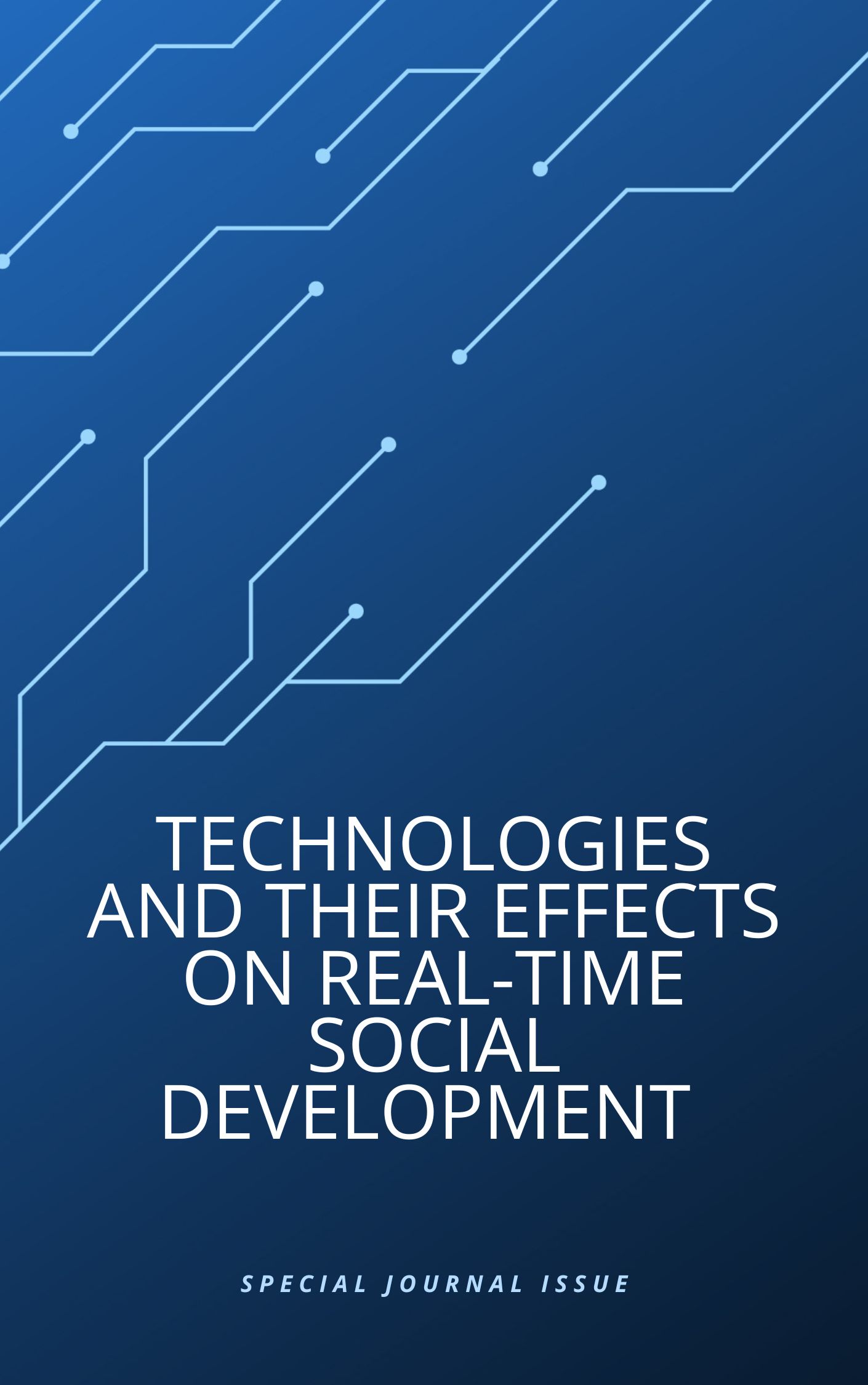Application of Mobile Learning Based on Artificial Intelligence in Student Open Teaching Strategy
Main Article Content
Abstract
Article Details

This work is licensed under a Creative Commons Attribution-NonCommercial 4.0 International License.
References
Mariyanti, T. (2023). Development of mobile learning applications for android based on artificial intelligence. International Transactions on Artificial Intelligence, 1(2), 230-235.
Alam, A., & Mohanty, A. (2023, January). Learning on the move: a pedagogical framework for state-of-the-art mobile learning. In International Conference on Data Management, Analytics & Innovation (pp. 735-748). Singapore: Springer Nature Singapore.
Li, F., & Wang, C. (2023). Artificial intelligence and edge computing for teaching quality evaluation based on 5G-enabled wireless communication technology. Journal of Cloud Computing, 12(1), 45.
Guangju Li. (2023). E-Learning Intelligence Model with Artificial Intelligence to Improve Learning Performance of Students. Journal of Computer Allied Intelligence, 1(1), 14-26.
Wagan, A. A., Khan, A. A., Chen, Y. L., Yee, P. L., Yang, J., & Laghari, A. A. (2023). Artificial intelligence-enabled game-based learning and quality of experience: A novel and secure framework (B-AIQoE). Sustainability, 15(6), 5362.
Zhu, Q., & Wang, M. (2023). Team-based mobile learning supported by an intelligent system: Case study of STEM students. In Cross Reality (XR) and Immersive Learning Environments (ILEs) in Education (pp. 5-21). Routledge.
Adeleye, O. O., Eden, C. A., & Adeniyi, I. S. (2024). Innovative teaching methodologies in the era of artificial intelligence: A review of inclusive educational practices. World Journal of Advanced Engineering Technology and Sciences, 11(2), 069 079.
Segun Kehinde. (2025). Assessing the Predictive Capabilities of Chatgpt and Generative Artificial Intelligence in Anticipating Realities and Events. Journal of Sensors, IoT & Health Sciences, 3(1), 46-56.
Swapna Saturi, & Arun Kumar Silivery. (2024). Computer Allied Intelligence in the Education Resource-Sharing Based inContract Deep Learning. Journal of Computer Allied Intelligence, 2(4), 51-69.
Kao, M. C., Yuan, Y. H., & Wang, Y. X. (2023). The study on designed gamified mobile learning model to assess students’ learning outcome of accounting education. Heliyon, 9(2).
Rangel-de Lazaro, G., & Duart, J. M. (2023). You can handle, you can teach it: Systematic review on the use of extended reality and artificial intelligence technologies for online higher education. Sustainability, 15(4), 3507.
P. Brundavani, D. Vishnu Vardhan, & B. Abdul Raheem. (2024). Ffsgc-Based Classification of Environmental Factors in IOT Sports Education Data during the Covid-19 Pandemic. Journal of Sensors, IoT & Health Sciences, 2(1), 28-54.
Airaj, M. (2024). Ethical artificial intelligence for teaching-learning in higher education. Education and Information Technologies, 29(13), 17145-17167.
Alam, A. (2023, April). Media Multitasking with M-Learning Technology in Real-Time Classroom Learning: Analysing the Dynamics in Formal Educational Settings for the Future of E-Learning in India. In 2023 2nd International Conference on Smart Technologies and Systems for Next Generation Computing (ICSTSN) (pp. 1-6). IEEE.
Al Ghatrifi, M. O. M., Al Amairi, J. S. S., & Thottoli, M. M. (2023). Surfing the technology wave: An international perspective on enhancing teaching and learning in accounting. Computers and Education: Artificial Intelligence, 4, 100144.
Liu, X., & Shao, X. (2024). Modern mobile learning technologies in online piano education: Online educational course design and impact on learning. Interactive Learning Environments, 32(4), 1279-1290.
Yim, I. H. Y., & Su, J. (2024). Artificial intelligence (AI) learning tools in K-12 education: A scoping review. Journal of Computers in Education, 1-39.
Liu, C., Hou, J., Tu, Y. F., Wang, Y., & Hwang, G. J. (2023). Incorporating a reflective thinking promoting mechanism into artificial intelligence-supported English writing environments. Interactive Learning Environments, 31(9), 5614-5632.
Razak, A., Nayak, M. P., Manoharan, G., Durai, S., Rajesh, G. A., Rao, C. B., & Ashtikar, S. P. (2023). Reigniting the power of artificial intelligence in education sector for the educators and students competence. In Artificial Intelligence and Machine Learning in Smart City Planning (pp. 103-116). Elsevier.
Dogan, M. E., Goru Dogan, T., & Bozkurt, A. (2023). The use of artificial intelligence (AI) in online learning and distance education processes: A systematic review of empirical studies. Applied sciences, 13(5), 3056.
Huang, A. Y., Lu, O. H., & Yang, S. J. (2023). Effects of artificial Intelligence–Enabled personalized recommendations on learners’ learning engagement, motivation, and outcomes in a flipped classroom. Computers & Education, 194, 104684.
Alfalah, A. A. (2023). Factors influencing students’ adoption and use of mobile learning management systems (m-LMSs): A quantitative study of Saudi Arabia. International Journal of Information Management Data Insights, 3(1), 100143.
Jin, S. H., Im, K., Yoo, M., Roll, I., & Seo, K. (2023). Supporting students’ self-regulated learning in online learning using artificial intelligence applications. International Journal of Educational Technology in Higher Education, 20(1), 37.
Amjad, A. I., Aslam, S., & Tabassum, U. (2024). Tech‐infused classrooms: A comprehensive study on the interplay of mobile learning, ChatGPT and social media in academic attainment. European Journal of Education, 59(2), e12625.
Castellano, M. S., Contreras‐McKay, I., Neyem, A., Farfán, E., Inzunza, O., Ottone, N. E., ... & Tubbs, R. S. (2024). Empowering human anatomy education through gamification and artificial intelligence: An innovative approach to knowledge appropriation. Clinical Anatomy, 37(1), 12-24.
Azamatova, A., Bekeyeva, N., Zhaxylikova, K., Sarbassova, A., & Ilyassova, N. (2023). The Effect of Using Artificial Intelligence and Digital Learning Tools Based on Project-Based Learning Approach in Foreign Language Teaching on Students' Success and Motivation. International Journal of Education in Mathematics, Science and Technology, 11(6), 1458-1475.
